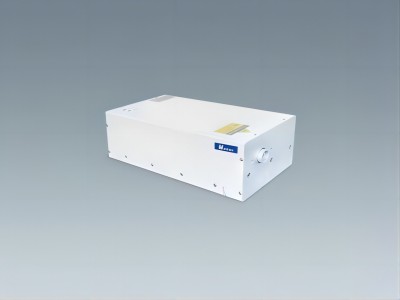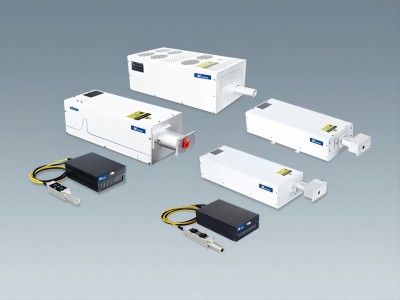What Laser is Better for Cutting Diamonds
Using a laser to cut diamonds results in smaller cuts and better results, and choosing the right laser is critical to the quality and efficiency of diamond cutting. Common lasers used for diamond cutting are femtosecond, ultraviolet, green, and infrared lasers.
Advantages of laser cutting diamonds
1. Fine focusing
The laser beam can be focused to a very small point, resulting in a very fine kerf. This is more precise than traditional mechanical cutting methods and reduces material waste.
2. High energy density
The high energy density of the laser is capable of rapidly melting or vaporizing the diamond, resulting in a very fine and smooth cut. The concentration of this high energy in a small area ensures that the cut line is very precise.
3. Contactless Processing
Laser cutting is a non-contact process that reduces the physical and thermal stresses on the diamond, thereby reducing the risk of breakage and cracking. In contrast, mechanical cutting can put pressure on the diamond, leading to potential damage.
4. Computerized control
Laser cutting is often used with a computerized control system to achieve intricate and detailed cutting patterns, and CAD software allows precise control of the laser path to ensure a consistent and high-quality cut.
5. Automation and efficiency
Laser cutting can be integrated into automated systems to greatly increase productivity. Multi-axis laser cutting systems can quickly cut multiple faces or complex shapes, increasing processing speed and flexibility.
Key factors in choosing a laser
1. Wavelength: Different wavelengths of laser light have different absorption rates in diamond materials. UV lasers or femtosecond lasers are commonly used because of their higher absorption in diamonds, allowing for finer cuts.
2. pulse width: short pulses (nanosecond, picosecond, or femtosecond) lasers reduce the heat-affected zone, avoiding thermal damage to the diamond and the formation of microcracks.
3. Power and Energy Density: High power and energy density can increase cutting speed and efficiency, but need to be balanced to avoid excessive heat input leading to diamond damage.
4. Focusing ability: the focusing ability of the laser beam directly affects the cutting accuracy. Need to choose a laser that can achieve high-precision focusing.
5. Stability and reliability: The laser’s stability and reliability directly impact long-term cutting quality and productivity.
Common types of lasers and the advantages and disadvantages of comparison
1. Ultraviolet laser (UV Laser)
Advantages:
– High Absorption: UV wavelengths are highly absorbed in diamonds, enabling fine cutting.
– Small heat-affected zone: short wavelength and short pulse width reduce the heat-affected zone, reducing thermal damage to the diamond.
– High precision: suitable for microfabrication and high-precision cutting.
Disadvantages:
– Higher cost: UV lasers are more expensive to manufacture and maintain.
– Slower speed: Cutting speed may be slower compared to high-power lasers.
2. Femtosecond Laser
Advantages:
– Extremely short pulses: Femtosecond pulse widths allow for complete avoidance of thermal effects, ensuring heat damage-free cutting.
– High precision: Suitable for extremely high precision and complex pattern cutting.
– Multi-functional: not only for cutting but also for drilling of diamonds, microstructure processing, etc.
Disadvantages:
– Very expensive: femtosecond lasers have extremely high equipment and maintenance costs.
– Complex operation: requires very fine operation control and maintenance.
3. Green Laser
Advantages:
– Higher Absorption: Green light is more absorbed in diamonds than infrared light, resulting in better cutting results.
– Moderate cost: Green lasers are less expensive than UV and femtosecond lasers.
Disadvantages:
– Thermal impact: although there is some thermal impact compared to UV and femtosecond lasers, it is less than infrared lasers.
– Lower accuracy: Compared to femtosecond and UV lasers, green lasers have slightly lower cutting accuracy.
Advantages:
– High power: suitable for fast cutting and large-area processing.
– Lower cost: IR lasers are less expensive than other types of lasers.
Disadvantages:
– Low Absorption: Infrared wavelengths are poorly absorbed in diamonds, resulting in poor cutting efficiency and accuracy.
– Large heat-affected zone: prone to thermal damage and micro-cracks, affecting cutting quality.
Suggestions for selection
– High precision and low heat impact: Femtosecond laser or UV laser is preferred.
– Balance cost and performance: Green laser is a compromise choice, offering better-cutting results and lower cost.
– Efficient large-area processing: infrared lasers are suitable for applications requiring high power and fast cutting, but with attention to heat-affect control.
Laser-cut diamonds enable smaller cuts and better results through high precision, high energy density, and contactless processing. Combined with computerized controls and automated systems, laser cutting offers an efficient and precise method of processing diamonds.
When selecting a laser, it is important to consider the specific cutting needs, budget, and processing environment to ensure that the most appropriate laser is selected to achieve the best cutting results.





